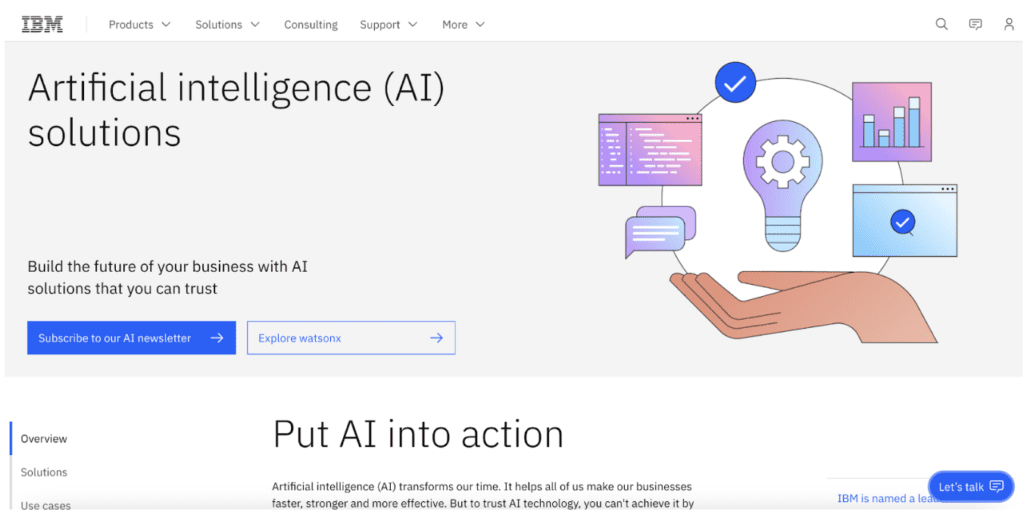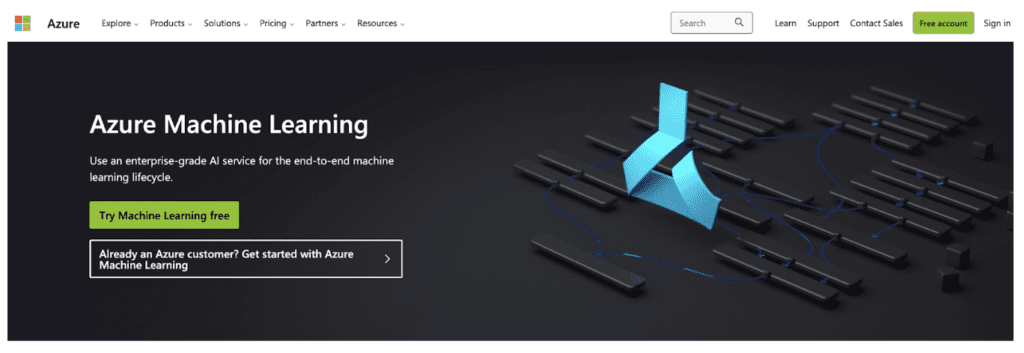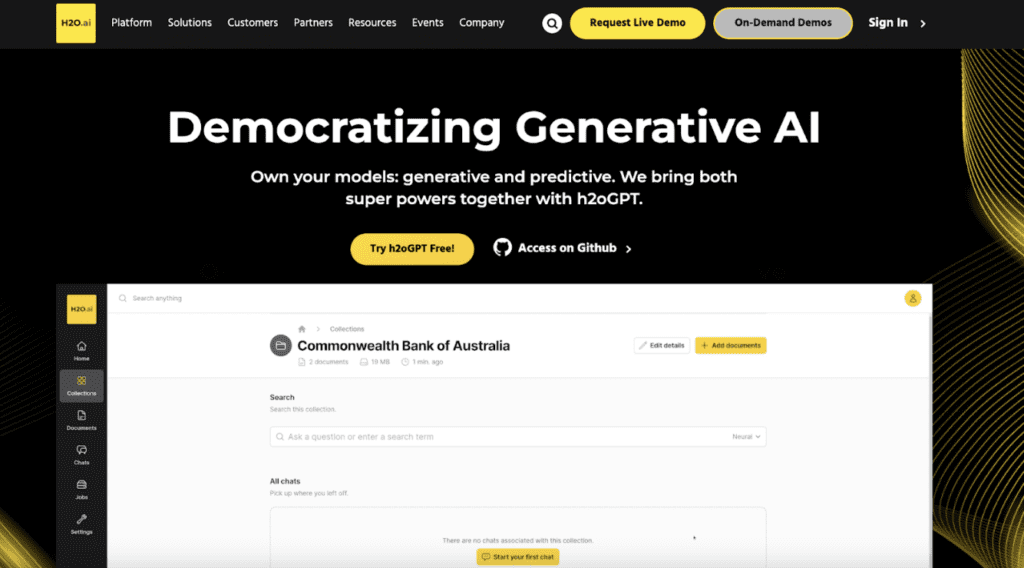If you’ve ever fantasized about creating tech marvels with the snap of your fingers, you’re not alone. Welcome to the goldmine of AI tools that promise to turn your dreams into digital reality.
Have you ever found yourself wondering about Which AI tools for development can revolutionize your development process? How can I reduce development time without sacrificing quality? What’s the secret behind seamless, software development? To quote the legendary Alan Turing, “We can only see a short distance ahead, but we can see plenty there that needs to be done.”
The quest for efficiency in software development isn’t a new saga. It’s an epic battle against time, cost, and human limitations. Studies like the 2021 Chaos Report by the Standish Group highlight the colossal 66% of projects that spiral into overruns or fail due to a lack of resources, time, or adequate tools. This isn’t just a problem, it’s a black hole swallowing potential breakthroughs and innovations.
I’m not just another scribe in the tech realm. With a decade under my belt transforming ideas into digital fortresses at Flatlogic, I’ve navigated the treacherous waters of software development, armed with nothing but my wit, expertise in software engineering and finance, and a relentless drive to innovate. From the trenches, I’ve led my team to not just survive but thrive, creating tools like the Flatlogic Generator, a testament to our mastery over AI and custom development.
By reading this article, you’ll be armed with the knowledge of the top 10+ AI tools for development that are changing the game in software development. From automating mundane tasks to predicting the next big trends, these tools are your allies in the digital frontier.
| Name | Target Audience | Key Features | Pricing Model | Pros | Cons |
| Flatlogic Generator | Entrepreneurs, developers, businesses | NLP for app generation, Full stack app generation, customizable templates, Multiple languages support, No scalability issues | Subscription-based | Rapid prototyping, No coding knowledge required, Complete code ownership | Subscription costs, Technical knowledge for customizations |
| TensorFlow | AI researchers, machine learning engineers | Numerical computation library, Deep learning support, Scalable across CPUs/GPUs/TPUs, Robust deployment | Free, open-source | Flexible and scalable, Strong community support, Continuous improvements | Steep learning curve, Complexity for simpler projects |
| IBM Watson | Businesses, developers | NLP and understanding, Speech services, Visual recognition, Easy integration | Pay-as-you-go, free tier | Advanced NLP, Wide range of AI services, Enterprise support | Expensive with usage, IBM-specific integration knowledge |
| Google Cloud AI Platform | Developers, businesses | Integrated ML toolset, Supports multiple frameworks, AutoML, Scalable infrastructure | Pay-as-you-go | Comprehensive tools, Scalable and flexible, Strong support | Expensive for large deployments, Platform complexity |
| Amazon SageMaker | Data scientists, developers, businesses | Managed Jupyter notebooks, One-click deployment, Built-in algorithms, Model Monitoring | Pay-as-you-go | Simplifies ML lifecycle, Scalable managed service, AWS integration | Complex pricing and AWS expertise required |
| OpenAI API | Developers, businesses | Access to GPT-3, Wide language task support, Simple API, Scalable infrastructure | Usage-based | Cutting-edge NLP, Easy integration, Continuous updates | High cost at scale, Dependency on platform |
| Microsoft Azure Machine Learning | Data scientists, AI developers, businesses | Drag-and-drop model builder, Machine learning pipelines, Azure integration, AutoML | Pay-as-you-go | Comprehensive platform, Supports code-first and low-code, Azure ecosystem integration | Complex for beginners, High cloud resource costs |
| H2O.ai | Data scientists, analysts, businesses | AutoML, Wide algorithm support, Big data integration, Scalable | Open-source, enterprise version | User-friendly, Strong support, Scalable for big data | Costly enterprise version, customization limitations |
| Anaconda | Data scientists, developers, researchers | Package and environment management, Data science packages, Jupyter integration, Community/commercial editions | Free, commercial editions | Simplifies environment management, Wide library availability, Strong Community | Resource-intensive, Learning curve for beginners |
| DataRobot | Business analysts, data scientists, organizations | AutoML, Model management dashboard, Enterprise integration, Model Governance | pricing | Streamlines ML lifecycle, Accessible to non-experts, Focuses on governance | Opaque pricing, Configuration for complex cases |

How AI Tools For Development Revolutionize Development Processes
AI tools for development are fundamentally transforming the landscape of software development, offering unprecedented efficiencies and capabilities. Here’s a comprehensive overview of how these technological advancements are reshaping the development process:
- Enhanced Efficiency. AI tools for development significantly accelerate the development cycle by automating repetitive and time-consuming tasks. This includes everything from code generation to bug detection, freeing developers to focus on more complex and creative aspects of software development. The result is a faster turnaround time for projects without sacrificing quality.
- For example, developers can describe features in plain language, and AI tools produce ready-to-use code, significantly speeding up project completion. This automation frees developers to concentrate on more complex tasks, ensuring projects are completed faster without compromising quality.
- Improved Accuracy. The precision offered by AI tools for development is unparalleled. Leveraging vast datasets to train machine learning models, these tools provide recommendations and optimizations that are incredibly accurate. This level of precision assists developers in making informed decisions and producing error-free code.
- For example, let’s look at error detection and code optimization, where AI tools can identify issues that human developers might overlook. This helps in creating more reliable and error-free applications, enhancing the overall quality of software projects.
- Customization and Adaptability. Unlike traditional development tools, AI tools for development are highly adaptable and capable of tailoring their functionalities to the specific requirements of a project or development team. They learn from user interactions, project outcomes, and preferences to deliver personalized support that improves over time.
- For example, when an AI tool customizes its coding suggestions based on the developer’s past preferences and the project’s current needs. This adaptability ensures that the tool provides relevant support, enhancing the development process’s efficiency and effectiveness.
- Proactive Risk Management. AI tools for development excel in identifying potential issues before they escalate into significant problems.
- By analyzing historical project data, they can predict risks related to budget, timeline, and resource allocation, allowing teams to proactively address them before they impact project success.
- Facilitated Collaboration. AI tools for development enhance collaboration among development teams by offering features that support real-time communication and coordination, regardless of geographical or language barriers. This not only streamlines workflow but also ensures that all team members are aligned on project objectives and progress.
- For example, automatically translates documentation and synchronizes tasks, making it easier for globally distributed teams to work together seamlessly. This improves team coordination and ensures that projects progress smoothly and efficiently.
- Continuous Learning and Improvement. AI tools for development are designed to learn from each interaction and project, constantly refining their algorithms and recommendations. This continuous learning process means that the tools become more effective and valuable over time, contributing to a cycle of ongoing improvement in the development process.
- For example, when an AI tool refines its code optimization suggestions based on past projects’ outcomes. This continuous learning ensures that the tool becomes more valuable over time, contributing to ongoing improvements in the software development process.
In summary, AI tools for development are revolutionizing the field by making software development faster, more precise, and increasingly focused on innovation. By leveraging these advanced technologies, developers can not only meet but exceed the evolving demands of the digital age.
Best 10 + AI Tools for Development
Creating a list of the best AI tools for development requires an in-depth look at what each tool offers, its ideal user base, standout features, pricing strategies, and a balanced view of its strengths and weaknesses. Let’s dive into the digital toolshed and see what makes these tools essential for developers looking to harness the power of AI.
Flatlogic Generator

The Flatlogic Generator is an innovative AI tool designed to simplify business software development. By allowing users to describe their application in English or through a user interface, it generates a fully functional web app, including backend, frontend, and database components. This tool is a game-changer for rapid prototyping and development, offering code ownership, customization, and scalability without the limitations of low-code/no-code platforms.
Target Audience: Entrepreneurs, developers, and businesses needing quick, scalable web application development with a high degree of customization.
Key Features:
- Natural language processing for app generation.
- Full stack application generation including CRUD operations.
- izable templates and codebase.
- Supports multiple programming languages and frameworks.
- Deployment-ready applications with no scalability issues.
Pricing Model: Subscription-based with multiple tiers to suit different project sizes and requirements.
Pros:
- Rapid prototyping and development of web applications.
- Eliminates the need for extensive coding knowledge.
- Offers complete code ownership and customization flexibility.
Cons:
- Subscription costs may accumulate for long-term projects.
- May require technical knowledge for advanced customizations and integrations.
TensorFlow

TensorFlow is an open-source machine learning framework developed by Google Brain. It’s designed for high-performance numerical computation and allows developers to create complex AI models with ease. TensorFlow is particularly renowned for its flexibility in conducting research and deploying AI applications across various platforms.
Target Audience: AI researchers, machine learning engineers, and developers working on large-scale AI projects.
Key Features:
- Comprehensive library for numerical computation using data flow graphs.
- Extensive support for deep learning and neural network models.
- Scalable across CPUs, GPUs, and TPUs.
- Robust model deployment on various platforms, from servers to edge devices.
Pricing Model: Free, open-source software.
Pros:
- Highly flexible and scalable.
- Strong community support and extensive documentation.
- Continuous updates and improvements.
Cons:
- Steep learning curve for beginners.
- Can be overly complex for simpler AI projects.
IBM Watson

IBM Watson is a powerful AI platform that offers various services for building cognitive applications. It excels in processing natural language, making it ideal for applications requiring language understanding, such as chatbots and customer service solutions.
Target Audience: Businesses and developers looking to incorporate AI into customer engagement, data analysis, and enterprise applications.
Key Features:
- Natural language processing (NLP) and understanding.
- Speech-to-text and text-to-speech services.
- Visual recognition and machine learning capabilities.
- Easy integration with existing applications and systems.
Pricing Model: Pay-as-you-go with a free tier for introductory exploration.
Pros:
- Advanced NLP capabilities.
- Wide range of AI services and tools.
- Strong enterprise support and security features.
Cons:
- Pricing can become expensive with increased usage.
- May require IBM-specific knowledge for integration and optimization.
Google Cloud AI Platform

Google Cloud AI Platform is a suite of machine learning services that enables developers to build, train, and deploy AI models at scale. It supports numerous machine learning frameworks, including TensorFlow, and offers tools for every stage of the AI development process.
Target Audience: Developers and businesses of all sizes looking to develop and deploy machine learning models.
Key Features:
- Integrated toolset for machine learning model development.
- Supports TensorFlow, PyTorch, and other frameworks.
- AutoML features for training high-quality models with minimal effort.
- Scalable and secure infrastructure for deploying AI applications.
Pricing Model: Pay-as-you-go based on resource usage.
Pros:
- Comprehensive and integrated AI development tools.
- High scalability and flexibility.
- Strong documentation and community support.
Cons:
- Can be expensive for large-scale deployments.
- The complexity of the platform may be daunting for newcomers.
Amazon SageMaker

Amazon SageMaker is a fully managed service that provides every developer and data scientist with the ability to build, train, and deploy machine learning models quickly. SageMaker simplifies the machine-learning model lifecycle, making it accessible even to those with limited machine-learning expertise.
Target Audience: Data scientists, developers, and businesses looking to streamline the development and deployment of machine learning models.
Key Features:
- Fully managed Jupyter notebooks for model building and training.
- One-click deployment and auto-scaling of trained models.
- Built-in algorithms and support for bringing your own.
- Model monitoring and workflow automation.
Pricing Model: Pay-as-you-go pricing for model training and deployment.
Pros:
- Simplifies the machine learning model lifecycle.
- Scalable and fully managed service.
- Integration with other AWS services.
Cons:
- Pricing can be complex to predict.
- May require AWS expertise for optimal use.
OpenAI API

The OpenAI API offers access to powerful AI models like GPT-3 for a wide range of natural language tasks. It’s designed for developers seeking to integrate advanced natural language processing into their applications, from automated content generation to complex language understanding.
Target Audience: Developers and businesses aiming to incorporate cutting-edge natural language processing in their applications.
Key Features:
- Access to state-of-the-art language models (e.g., GPT-3).
- A wide range of language tasks is supported.
- Simple integration and API usage.
- Scalable and reliable infrastructure.
Pricing Model: Usage-based pricing with tiered rates depending on the model and volume.
Pros:
- Leading-edge language processing capabilities.
- Easy to integrate and use.
- Continuous model improvements and updates.
Cons:
- High cost at scale.
- Dependency on OpenAI’s platform and model availability.
Microsoft Azure Machine Learning

Microsoft Azure Machine Learning is a cloud-based platform for building, training, and deploying machine learning models. It provides a wide array of tools and services that cater to both experienced data scientists and developers new to machine learning, emphasizing seamless integration with other Azure services.
Target Audience: Data scientists, AI developers, and businesses leveraging cloud infrastructure for AI solutions.
Key Features:
- Drag-and-drop machine learning model builder for non-experts.
- Advanced machine learning pipelines for efficient model management.
- Integration with Azure services for end-to-end application development.
- AutoML for automatic algorithm and hyperparameter selection.
Pricing Model: Azure offers a pay-as-you-go pricing model, with costs varying based on the resources and services used.
Pros:
- Comprehensive cloud-based machine learning platform.
- Supports both code-first and low-code development.
- Strong integration with Azure’s ecosystem.
Cons:
- Can be complex to navigate for beginners.
- Costs may escalate with extensive use of cloud resources.
H2O.ai

H2O.ai is an open-source, automated machine-learning platform that democratizes the creation of advanced AI models. It’s designed to enable businesses and developers to rapidly experiment and deploy AI models without deep machine learning expertise.
Target Audience: Data scientists, analysts, and businesses looking for a straightforward path to implementing AI.
Key Features:
- AutoML functionality for automatic model training and tuning.
- Support for a wide range of machine learning algorithms.
- Easy integration with big data platforms.
- Scalable to handle large datasets and complex models.
Pricing Model: H2O.ai offers both an open-source version and a paid enterprise version, H2O Driverless AI, with advanced features and support.
Pros:
- User-friendly and accessible to non-experts.
- Strong community and enterprise support.
- High scalability for big data applications.
Cons:
- The enterprise version can be costly.
- Some customization limitations compared to hand-coded models.
Anaconda

Anaconda is a popular open-source distribution of Python and R for scientific computing and data science. It simplifies package management and deployment for AI and machine learning projects, offering an easy way to install, run, and update complex data science and AI environments.
Target Audience: Data scientists, developers, and researchers working on machine learning, data analysis, and scientific computing projects.
Key Features:
- Easy management of packages and environments with Conda.
- Thousands of data science and machine learning packages are available.
- Integration with Jupyter notebooks for interactive data exploration.
- Community and commercial editions are available for different needs.
Pricing Model: Free for the individual, open-source version. Commercial editions are available for teams and enterprises.
Pros:
- Simplifies environment management for AI projects.
- The wide array of libraries and tools is readily available.
- Strong community support.
Cons:
- Can be resource-intensive.
- Some learning curve for beginners to manage environments effectively.
DataRobot

DataRobot is an enterprise AI platform that automates the end-to-end process for building, deploying, and maintaining machine learning models. It’s designed to make data science accessible to business analysts and developers, emphasizing deployment speed and model accuracy.
Target Audience: Business analysts, data scientists, and organizations looking to deploy machine learning models without deep technical expertise rapidly.
Key Features:
- Automated machine learning (AutoML) for model building and deployment.
- Comprehensive dashboard for model management and monitoring.
- Integration with enterprise data systems and cloud services.
- Advanced model explainability and governance features.
Pricing Model: pricing is based on the specific needs and scale of the deployment.
Pros:
- Streamlines the machine learning lifecycle.
- Accessible to users with varying levels of expertise.
- Strong focus on model management and governance.
Cons:
- pricing can be opaque and potentially expensive.
- May require additional configuration for complex use cases.
Summing Up
The world of custom software development is changing, driven by AI tools for development that offer unprecedented efficiency, accuracy, and scalability. As developers and organizations navigate this evolving landscape, their choice of tools can significantly impact the speed, quality, and innovation of their projects.
In this technological revolution, Flatlogic is at the forefront, offering the Flatlogic Generator as your go-to solution for rapid, scalable, and customizable business software development (CRM, ERP, HRM, etc.). Whether you’re looking to quickly prototype, develop complex applications, or ensure your projects are built with the latest AI capabilities, Flatlogic Generator is designed to meet your needs without the constraints of traditional development methodologies.
Embrace the future of software development with Flatlogic. Explore our services, harness the power of Flatlogic Generator, and realize your vision with unparalleled efficiency and customization. Let’s build something extraordinary together.

Comments